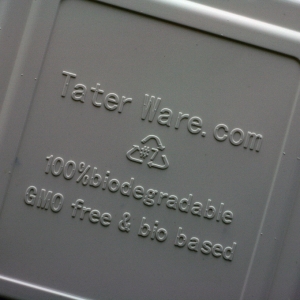 Food companies confront no more sensitive topic today than the debates over genetically modified organisms (GMOs). Consumers are deeply concerned, asking questions like “What are GMOs doing to our food supply,” “Are they dangerous,” and, whether they are or not, “Should they be labeled?” Many of us have strong opinions about these questions, and even those who don’t are influenced by the controversy, as a large percentage of respondents to a recent poll said they thought GMOs ought to be labeled.
Food companies confront no more sensitive topic today than the debates over genetically modified organisms (GMOs). Consumers are deeply concerned, asking questions like “What are GMOs doing to our food supply,” “Are they dangerous,” and, whether they are or not, “Should they be labeled?” Many of us have strong opinions about these questions, and even those who don’t are influenced by the controversy, as a large percentage of respondents to a recent poll said they thought GMOs ought to be labeled.
For all but the most stringent anti-GMO companies, consumer concerns represent a significant public perception challenge. Even if GMO labeling regulations fail (which seems unlikely) consumers increasingly have the motivation and ability to research and uncover information about suppliers and ingredients. In addition, retailers like Whole Foods are beginning to put pressure on manufacturers to label products with GMOs. In other words, it might be naïve to expect to be able to avoid the issue.
If your company uses or makes GMO ingredients and has no plans (for many reasons) to change, you can employ several tactics to ease customer anxieties and preserve confidence in your brand. One technique we recently highlighted is a transparency campaign, which allows a company to address a wide range of consumer worries.
Whether you engage in a transparency campaign or another public information campaign, your company must understand the science behind GMOs, which remain approved by regulators like the FDA. When even environmentalists are questioning anti-GMO sentiment, continuing with using and marketing GMOs might be a position that’s becoming more viable.

Based on consumer perception, your company might consider taking a bigger step and removing GMOs from your ingredients or products or from key offerings. A number of companies have done so recently, perhaps most prominently General Mills, which recently rolled out non-GMO Original Cheerios. Although making such a change has the potential to gain significant consumer goodwill, it’s crucial to handle it properly.
Going non-GMO is expensive, and it’s no guarantee of higher sales. In General Mills’ case, the Cheerios switch received significant press, much of it positive. However, it has yet to do much for the company’s bottom line, as the Motley Fool pointed out.
Non-GMO Cheerios haven’t sold better for a variety of reasons, not all of them—such as a slow market for cold cereal in general—within the control of General Mills, Still, it’s also true, as the Motley Fool notes, that General Mills has not marketed the change extensively, and they have no plans to convert other products. If you do go non-GMO, it’s important to convince consumers that you really mean it, to associate your brand with the values of health and sustainability that many consumers associate with non-GMO products.
If your company is deciding between different strategies to handle the GMO challenge, let MarketPlace help. As food industry experts, we’re here not to promote our stance on the GMO issue but to help your brand make informed decisions and act on those decisions, to use our understanding of consumer trends and industry practices to help you choose the best path forward for your company.
Strawberry image (cropped) courtesy of JD Hancock. Carton image courtesy of Richard Masoner

